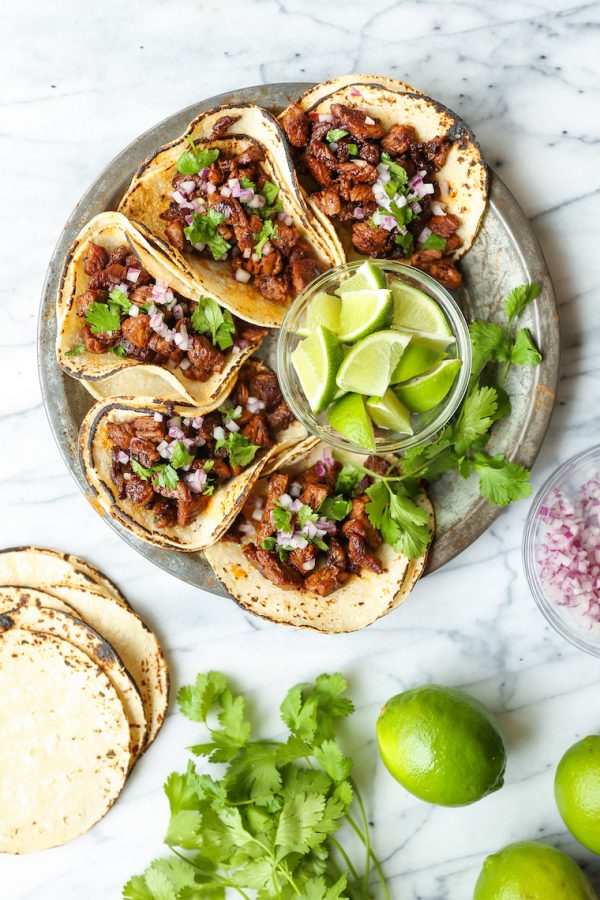The Foodies Journal: Tacos
October 29, 2019
Tacos are by far the most iconic Mexican dish that everyone can love and enjoy. However, the traditional taco isn’t the hard shell taco you’d have in Taco Bell, but in fact, is made from a special dough created from corn.
You see tacos originated in Mexico obviously, however this delicious dish’s name “taco” was actually referred to as a cloth plug used in firearms in early colonial Spain. Later on in history, silver miners in the 18th century in Mexico used “taco” to refer to their explosives (gunpowder rolled into paper). These miners also packed lunch like any other however, they began calling their tortilla wrapped foods with hot sauce, tacos. From there tacos just kept growing and being used among many people because of the simplicity of tacos, and along with the rise of industrialization, taco stands started appearing making the dish even more popular and accessible. The meats in tacos started really getting variety when in the north the rise of Carne Asada (beef) began along with Carnitas (pork) in the south. With the growth of Mexico though and many other reasons, people started immigrating to the United States. This immigration truly picked up in the 20th century making tacos even more known there because the people immigrating from Mexico were bringing their own dishes and sharing it. Then as the American food industry does, we Americanized tacos and made many slight changes. For instance, the invention of Chili Powder by the Texans played a part in being included along with iceberg lettuce and cheddar cheese, and maybe the most major change the U shaped hard shell taco. With these changes though we can still find their traditional tacos in family-owned mexican restaurants and Mexican restaurants that stick with the traditional making of tacos and Mexican cuisine. The traditional tortilla for tacos is made of masa and is created by the nixtamalization process. This process is when you soak maize (field corn) in lime water to make the corn puff up, and then you grind it to make masa dough which is what is used to make tortillas for tacos. Unlike tortillas made with flour or other more American ingredients nixtamalization has actual health benefits. First of all, nixtamalization can reduce the risks of pellagra diseases, it can increase your calcium intake, increase your starch resistance which can help to prevent diseases such as cancer, and nixtamalization can also increase the bioavailability of iron and reduce mycotoxins (which are basically grown from fungi) in kernels. Along with these benefits using nixtamalization in tortillas will provide the tortilla with 35% more protein, 45% calories, and 50% calcium.
The history of tacos is very community-oriented. For instance in the 1950s during an economic crisis and shortage of jobs the residents and “taqueros” (taco makers) of San Vicente, Xiloxochitta began selling Taco baskets on bikes, riding every morning to sell the baskets with tacos and bottled green and red salsas. These residents mainly sold to workers, students, and employees.
However, the making of the taco really took its shape in Puebla Mexico where the taco al pastor was created. Al pastor is a dish adapted from Arab shawarma spit grilled meat brought by a large Lebanese migration in the 1930s to the 1960s in Mexico. Taco al Pastor is actually also derived from the delicious gyros of Greece, doner kebab in Turkey, and shawarma from Lebanon which would lead to a conclusion that tacos actually have a common origin in the Ottoman Empire.
Even if the taco has some different views such as being seen in American culture to have hard shell tacos will always be a famous, and iconic Mexican dish, in Mexican culture.





















































































































































